dangerous
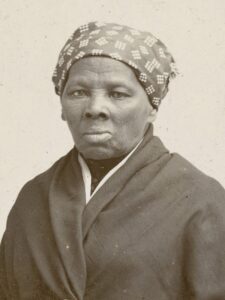
 When we think of things like witness protection or a criminal hiding out, the idea is to find a way to hide in plain sight. A disguise is the first thing that might come to mind, but that is not always the case. When Harriet Tubman, who is best known today as a brave freedom fighter and abolitionist, was in the thick of the movement to free the slaves, she was faced with some particularly dangerous situations. Harriett Tubman was born Araminta “Minty” Ross to enslaved parents, Harriet (“Rit”) Green and Ben Ross in March of 1822. Rit and Ben were enslaved by different families, so it seems unlikely that they would later be able to have a child together, but Mary Pattison Brodess (and later her son Edward), who was Rit’s owner, and Anthony Thompson, who enslaved Ben, would marry, thereby connecting the two families. Thompson ran a large plantation near the Blackwater River in the Madison area of Dorchester County, Maryland. So, Harriett (Minty) was born into slavery. Like most slaves, Tubman was beaten and whipped by enslavers as a child. Those beatings resulted in a traumatic head wound when an irate overseer threw a heavy metal weight, intending to hit another slave, but hit her instead. The injury caused dizziness, pain, and spells of hypersomnia, which occurred throughout her life. The injury resulted in strange visions and vivid dreams, that lasted for the rest of her life. She ascribed to premonitions from God. These experiences, combined with her Methodist upbringing, led her to become devoutly religious.
When we think of things like witness protection or a criminal hiding out, the idea is to find a way to hide in plain sight. A disguise is the first thing that might come to mind, but that is not always the case. When Harriet Tubman, who is best known today as a brave freedom fighter and abolitionist, was in the thick of the movement to free the slaves, she was faced with some particularly dangerous situations. Harriett Tubman was born Araminta “Minty” Ross to enslaved parents, Harriet (“Rit”) Green and Ben Ross in March of 1822. Rit and Ben were enslaved by different families, so it seems unlikely that they would later be able to have a child together, but Mary Pattison Brodess (and later her son Edward), who was Rit’s owner, and Anthony Thompson, who enslaved Ben, would marry, thereby connecting the two families. Thompson ran a large plantation near the Blackwater River in the Madison area of Dorchester County, Maryland. So, Harriett (Minty) was born into slavery. Like most slaves, Tubman was beaten and whipped by enslavers as a child. Those beatings resulted in a traumatic head wound when an irate overseer threw a heavy metal weight, intending to hit another slave, but hit her instead. The injury caused dizziness, pain, and spells of hypersomnia, which occurred throughout her life. The injury resulted in strange visions and vivid dreams, that lasted for the rest of her life. She ascribed to premonitions from God. These experiences, combined with her Methodist upbringing, led her to become devoutly religious.
Tubman became an abolitionist, and started to wage a war on slavery, although she obviously waged war in a very different way than most wars are waged. In 1849, she escaped from her owners and went to Philadelphia, but it was not enough to have her freedom, she wanted her whole family free. So, she returned to Maryland to rescue her family very soon after. It was hard and dangerous work, but she slowly, one group at a time, brought relatives with her out of the state, and eventually guided dozens of other enslaved people to freedom. Tubman, also known as “Moses” traveled by night and in extreme secrecy, but as she later said she “never lost a passenger” on her route. After the Fugitive Slave Act of 1850 was passed, she helped guide escapees farther north into British North America (Canada) and helped newly freed people find work. Tubman met John Brown in 1858 and helped him plan and recruit supporters for his 1859 raid on Harpers Ferry.
Tubman, in order to stay safe, had to hide in plain sight, and as an undercover agent helping escaped enslaved people, she was known to carry chickens with her. You might be wondering why that would be. Tubman had to walk right by slavers, and those sent to recapture escaped slaves, so when she thought a slaver might be getting suspicious of her, she would release the chickens and then recapture them. I’m sure the slavers watched the commotion, but they just thought she was a slave recapturing the chickens for her owners. Little did they know how wrong they were. Simply put, the commotion was so distracting that the slave masters didn’t notice who she was! Sometimes, she would also pretend to read a newspaper, because enslaved people weren’t supposed to be able to read, so she wouldn’t be suspected! While her owners had thought she was just a “dumb slave girl” who didn’t know anything, she was actually a very smart woman, who outsmarted them all.

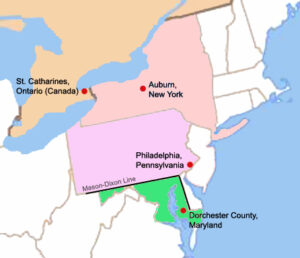
Harriett Tubman is credited with emancipating about 300 slaves…all while hiding in plain sight!! Pretty wise is you ask me. By 1911, Tubman’s body was so frail that she was admitted into the rest home named in her honor. A New York newspaper described her as “ill and penniless,” which prompted supporters to offer a new round of donations. Just before she died, she quoted the Gospel of John to those in the room, “I go away to prepare a place for you.” Tubman was buried with semi-military honors at Fort Hill Cemetery in Auburn, New York.
 During World War I, Britain, like the United States would have to do in World War II, had to employ large numbers of women into jobs vacated by men who had gone to fight in the war. They also had to create new jobs as part of the war effort. As an example, women were hired in munitions factories. The high demand for weapons resulted in the munitions factories becoming the largest single employer of women during 1918. It was a job that many people resisted, mainly because it was seen as “men’s work.” When I think about the work these women were doing, I find myself much more concerned with the toxicity and danger of the materials they were working with, than whether or not the job should be done by a man. Of course, the materials would present the same danger to the men, but the men had always felt like the dangerous work should fall to them.
During World War I, Britain, like the United States would have to do in World War II, had to employ large numbers of women into jobs vacated by men who had gone to fight in the war. They also had to create new jobs as part of the war effort. As an example, women were hired in munitions factories. The high demand for weapons resulted in the munitions factories becoming the largest single employer of women during 1918. It was a job that many people resisted, mainly because it was seen as “men’s work.” When I think about the work these women were doing, I find myself much more concerned with the toxicity and danger of the materials they were working with, than whether or not the job should be done by a man. Of course, the materials would present the same danger to the men, but the men had always felt like the dangerous work should fall to them.
Nevertheless, with the introduction of conscription in 1916 everything changed. Conscription refers to the process of automatically calling up men and women for military service. During the First World War men (it only applied to men at this time) who were conscripted into the armed forces had no choice but to go and fight, even if they did not want to. Around 1916, with the need becoming serious, the government began  coordinating the employment of women through campaigns and recruitment drives. This led to women working in areas of work that were formerly reserved for men. Jobs such as, for example railway guards, ticket collectors, buses, tram conductors, postal workers, police, firefighters, as well as bank tellers and clerks. Some women also worked heavy or precision machinery in engineering, led cart horses on farms, and worked in the civil service and factories.
coordinating the employment of women through campaigns and recruitment drives. This led to women working in areas of work that were formerly reserved for men. Jobs such as, for example railway guards, ticket collectors, buses, tram conductors, postal workers, police, firefighters, as well as bank tellers and clerks. Some women also worked heavy or precision machinery in engineering, led cart horses on farms, and worked in the civil service and factories.
By 1917 the British munitions factories, which by this time, primarily employed women workers, produced 80% of the weapons and shells used by the British Army. The women working there soon became known as “canaries” because they had to handle TNT (the chemical compound trinitrotoluene that is used as an explosive agent in munitions) which caused their skin to turn yellow. The nickname might have been a cute joke, but the job the women did was far from funny. These women risked their lives working with poisonous substances without adequate protective clothing or the required safety measures, that we know are needed now. During the years of World War I, around 400 women died from overexposure to TNT. I wonder too, how many died in 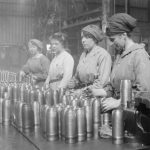 the years that followed the war, from exposure to the same chemicals that had killed the original 400 women.
the years that followed the war, from exposure to the same chemicals that had killed the original 400 women.
As if the dangerous working conditions weren’t enough, women were also paid significantly less than men in comparable positions. In 1918, women workers on London’s buses, trams, and subways organized a strike and managed to win equal pay for equal work. When the war ended, many women were fired to free up jobs for returning veterans. Some thanks that was. I’m sure many of the women were glad to go back to their prior jobs, or go home to take care of their families, but to be fired” was just wrong in every way. Nevertheless, in return for their hard work, these women were fired so that the returning men could have a job again.
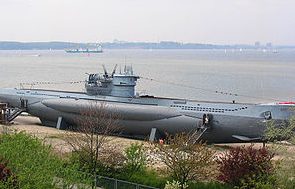 Anytime a soldier goes to war, there is a possibility of that soldier not returning, but some MOS (Military Occupational Specialty) categories were more dangerous than others. The life expectancy of a ball turret gunner in World War II, for instance, was just 12 minutes…yes, that’s right…12 minutes. And these guys didn’t always have a choice as to what job they did. If they were the shortest, they were most likely going to be a ball turret gunner, because of limited space in the ball. Still, while I don’t know the exact number who died, I know it was quite a few. Of course, soldiers on the ground are more at risk than other occupations too. There were the suicide bombers from Japan, who chose to fly their plane right into a ship too, but I think that few occupations were as deadly as that of the U-Boat crew. It wasn’t so much that the occupation was deadly, but rather that every country in the world was after the German U-Boat.
Anytime a soldier goes to war, there is a possibility of that soldier not returning, but some MOS (Military Occupational Specialty) categories were more dangerous than others. The life expectancy of a ball turret gunner in World War II, for instance, was just 12 minutes…yes, that’s right…12 minutes. And these guys didn’t always have a choice as to what job they did. If they were the shortest, they were most likely going to be a ball turret gunner, because of limited space in the ball. Still, while I don’t know the exact number who died, I know it was quite a few. Of course, soldiers on the ground are more at risk than other occupations too. There were the suicide bombers from Japan, who chose to fly their plane right into a ship too, but I think that few occupations were as deadly as that of the U-Boat crew. It wasn’t so much that the occupation was deadly, but rather that every country in the world was after the German U-Boat.

The U-Boat was a German submarine, and they were the best sumbarine the Germans had. There were 40,000 men who were assigned to the German U-Boats during World War II. Of those assigned to the U-Boats, only 10,000 returned. That is a shocking number!! I would never have wanted the Germans to win World War II, but when I think of the soldiers who fought, I’m sure that there were many who disagreed with Hitler, and others who were brainwashed into following him, but they were still soldiers, and people, and they had been given an assignment that was going to most likely get them killed. You see, the German U-Boat was the most feared of all the ships or submarines during World War II. They had a code system that was hard to crack, and they were sinking the Allies ships. They had to go. Once the Allies figured out their code, they could no longer hide. The U-Boats began dropping like flies, and with them… their crews, of course.
their crews, of course.
The U-Boats ran on battery power when they were submerged, and that didn’t last very long. So they were required to be a surface vessel most of the time, operating on their diesel engines. I don’t think that contributed to the U-Boat becoming a target, because as long as their whereabouts was coded, they were relatively safe. Once that safety net was gone, they were in a lot of trouble, as has been proven by the number of casualties. The fate of the crews of the U-Boats was not a good one, and those 30,000 men paid the final price, once that safety net was gone.
 The Great Lakes are a beautiful series of lakes in the northern United States that for all intents and purposes might as well be the ocean. They are wonderful places for all kinds of recreation, but they are also working lakes, because the Great Lakes handles shipping from all over the world. That said, the summers can be very busy on the Great Lakes, but the winters are a very different thing. Most of the Great Lakes ice over in the winter, or at least enough to make travel on them pretty much impossible. Since the winters are long in the north, the shipping companies try to get every bit of use out of the lakes that they can, and that can bring hazardous and even tragic results.
The Great Lakes are a beautiful series of lakes in the northern United States that for all intents and purposes might as well be the ocean. They are wonderful places for all kinds of recreation, but they are also working lakes, because the Great Lakes handles shipping from all over the world. That said, the summers can be very busy on the Great Lakes, but the winters are a very different thing. Most of the Great Lakes ice over in the winter, or at least enough to make travel on them pretty much impossible. Since the winters are long in the north, the shipping companies try to get every bit of use out of the lakes that they can, and that can bring hazardous and even tragic results.
November is known for screaming into the area, and with it come the Gales. I suppose that to most people, the thought of a dangerous storm of a lake seems a little odd. Yes, if it were a small boat, just about any storm could make for a dangerous situation on the lake, but when you are a big ocean going vessel or ore boat, you wouldn’t think a storm on the lake would be a big deal. You would find that you are wrong on that one though. Over the years, many lives and many ships have been lost on the Great Lakes when the ship was out on the water just a little too late in the season.
Sometimes, it would be a captain who took a chance on the weather, and got himself into trouble, but other times, it would be a situation when the November Gales fooled them and showed up early. Of course, those types of accidents were much more common before all the the weather tracking equipment that is available these days. Some of the deadliest storms were 1860 when the Lady Elgin sank, killing over 400, the 1835 Lake Huron “Cyclone” which claimed 254 lives, the 1913 Great Storm which claimed 244 lives, the 1880 Alpena 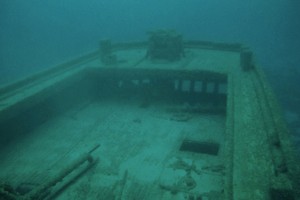 Storm which killed about 100, the 1940 Armistice Day storm which took 66 lives, the 1916 Black Friday storm which killed 49, the 1958 sinking of the Bradley with 33 lives lost, the 1905 Blow whish killed 32, the 1975 sinking of the Edmund Fitzgerald which took 29 lives, the 1966 sinking of the Morrel which left 28 dead, and the 1894 May Gale which killed 27. These are big storms with big loss of life. On our small lakes, if a summer brings a couple of drownings, we cnsider it a bad year. I can’t imagine what it would be like to lose so many lives all at once on a lake, and yet it is a possibility those in the shipping businesses on the Great Lakes live with every year.
Storm which killed about 100, the 1940 Armistice Day storm which took 66 lives, the 1916 Black Friday storm which killed 49, the 1958 sinking of the Bradley with 33 lives lost, the 1905 Blow whish killed 32, the 1975 sinking of the Edmund Fitzgerald which took 29 lives, the 1966 sinking of the Morrel which left 28 dead, and the 1894 May Gale which killed 27. These are big storms with big loss of life. On our small lakes, if a summer brings a couple of drownings, we cnsider it a bad year. I can’t imagine what it would be like to lose so many lives all at once on a lake, and yet it is a possibility those in the shipping businesses on the Great Lakes live with every year.
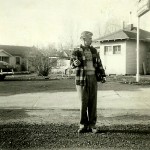 Many years ago, when things were much safer, there was a habit that a lot of people engaged in, that today, in our time, parents would cringe about and warn their children against…hitchhiking. Kids used to hitchhike to get to work, to a friends house, to town, or wherever they might be going. They didn’t have enough money to buy a car of their own, and it was a pretty much unheard of item to have, so I guess they assumed that anyone who had a car was a nice enough person, and they would hitch a ride from them. Usually they were right, and nothing bad happened, but later on, as this world got a little uglier, taking a ride from someone was something you did at your own risk, because you never knew what you were getting into.
Many years ago, when things were much safer, there was a habit that a lot of people engaged in, that today, in our time, parents would cringe about and warn their children against…hitchhiking. Kids used to hitchhike to get to work, to a friends house, to town, or wherever they might be going. They didn’t have enough money to buy a car of their own, and it was a pretty much unheard of item to have, so I guess they assumed that anyone who had a car was a nice enough person, and they would hitch a ride from them. Usually they were right, and nothing bad happened, but later on, as this world got a little uglier, taking a ride from someone was something you did at your own risk, because you never knew what you were getting into.
Since my dad and his brother had a habit of jumping onto the slow moving train when they wanted a ride, even though they had a pass, and therefore had no need to jump onto the train, it would be my assumption that they probably hitchhiked too. Of course, they also had a real love for cars too, and therefore my guess would be that they were more likely to be the ones picking up the hitchhiker, not being the hitchhiker. Nevertheless, that isn’t really safe these days either.
I have been in a position where I had to take the help of a stranger, and I must say, I did not like it, but it was cold, the car had broken down, I had my girls with me, and it was still a long walk home. Thankfully the person I tool the ride from was a neighbor in the area we lived in, and we became friends with them after that. Nevertheless, at the time of the ride, it was a risky move to take that ride, and one I very much hated to take.
Over the years, Bob and I have picked up several people who were in a bad situation. They weren’t hitchhiking exactly, but like me, they knew that if they didn’t take the ride, they probably wouldn’t get home anyway. One was a couple whose car broke down, and the temperature that New Year’s Day at 3:00 in the morning was about 15° below zero, gratefully accepted our offer for a ride, and after driving the about 4 miles to their home, I have no doubt that they would have died that night, had we not helped them. Another was a couple who had slid off the road on snow and almost into the river, and no one had stopped in more that half and hour. We took them to town. Who knows how long they would have been there.
Hitchhiking in days gone by was not nearly as risky as it use to be, but any time you take a ride from someone you don’t know, or pick up someone you don’t know, in the old west, or today, you are putting your life at risk. So, while my dad may have done it, and probably knew the boy in this picture who was doing it, hitchhiking is not something I would recommend today.
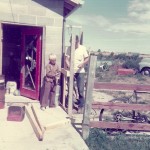 Little boys want so much to be just like their daddy. They want to do whatever their daddy is doing. Most times they aren’t much help until they are older, but if their dads don’t let them help when they are little, they most likely won’t want to when they are older. It is a challenge for those dads to find suitable jobs for those little boys though. Sometimes all they can do is point to a tool so they can get it for them. It would be much easier for that dad to do the job himself, but that would break his little boy’s heart, and he can’t have that. Of course, as those little boys eventually learn the ropes, and they can become pretty good hands, if they still want to help by that time. A kid with a little training, can learn to figure out complex problems, but a kid with no training, will have a much harder time. So, a good dad will let their little boys help out so they can learn, even
Little boys want so much to be just like their daddy. They want to do whatever their daddy is doing. Most times they aren’t much help until they are older, but if their dads don’t let them help when they are little, they most likely won’t want to when they are older. It is a challenge for those dads to find suitable jobs for those little boys though. Sometimes all they can do is point to a tool so they can get it for them. It would be much easier for that dad to do the job himself, but that would break his little boy’s heart, and he can’t have that. Of course, as those little boys eventually learn the ropes, and they can become pretty good hands, if they still want to help by that time. A kid with a little training, can learn to figure out complex problems, but a kid with no training, will have a much harder time. So, a good dad will let their little boys help out so they can learn, even 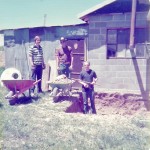 if it would be easier to do it themselves, and even if their little man gets annoying at times.
if it would be easier to do it themselves, and even if their little man gets annoying at times.
Bob’s dad, my father-in-law, had two sons, and while I can’t say how Bob was as a helper when he was as a little guy, I do remember that Ron, while probably the same as Bob, was a bit of a trial. The men needed to get things done, and yet here was Ron…wanting to help. Bob was born 14 years before Ron, so by this time he and his dad worked very well together. Ron just wanted to be like his dad and his big brother. They tried to let him help as much as possible, but some of the work they were doing was too dangerous for Ron, and some of it was too complex. I’m sure it was frustrating for Ron, and the times I witnessed, I think it probably hurt his feelings some too. That made me feel bad, but then 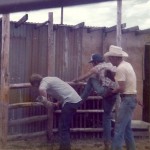 his dad would find a job to do that Ron was able to help with, and that made things a whole lot better.
his dad would find a job to do that Ron was able to help with, and that made things a whole lot better.
As the years went by, both of the boys became their dad’s right hand man, excelling in different kinds of work at different times in his life. He very seldom had to hire work done, because if he couldn’t do it, his boys probably could. In fact, the three of them, along with grandsons Barry, JD, and Eric were usually more than enough to get any job done. Yes, even if training the littlest helpers can be frustrating at times, it usually ends up being the best move you can make.
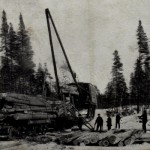 For a number of years some of my dad’s family worked in the lumber business like so many other people from the area near International Falls, Minnesota and northern Minnesota, North Dakota, and Wisconsin. Much of the lumber was then sent to the Sawmill and Paper mill in International Falls. The year was somewhere around 1912, and the equipment used was not like what is used in the lumber business of today. After the logs were dragged or “skidded” to the railroad, they were loaded on to the rail cars by a Yarder. A Yarder was a machine that traveled on railroads knows as “dummy lines” to the site where the logs were to be loaded. These machines appeared to be large and cumbersome, they were in reality, workhorses that could handle big jobs. Once the logs were hooked to the cables, the log could be skidded at a rate of 1000 feet per minute…making work around the machines, rather dangerous. Once the log was near the rail car, men and machines had to work together using cables and poles to load the logs onto the railroad car. Once again, this put the men in harm’s way. If a log slipped, it was very likely that it was going to hit someone, resulting in death or at the very least, serious injury.
For a number of years some of my dad’s family worked in the lumber business like so many other people from the area near International Falls, Minnesota and northern Minnesota, North Dakota, and Wisconsin. Much of the lumber was then sent to the Sawmill and Paper mill in International Falls. The year was somewhere around 1912, and the equipment used was not like what is used in the lumber business of today. After the logs were dragged or “skidded” to the railroad, they were loaded on to the rail cars by a Yarder. A Yarder was a machine that traveled on railroads knows as “dummy lines” to the site where the logs were to be loaded. These machines appeared to be large and cumbersome, they were in reality, workhorses that could handle big jobs. Once the logs were hooked to the cables, the log could be skidded at a rate of 1000 feet per minute…making work around the machines, rather dangerous. Once the log was near the rail car, men and machines had to work together using cables and poles to load the logs onto the railroad car. Once again, this put the men in harm’s way. If a log slipped, it was very likely that it was going to hit someone, resulting in death or at the very least, serious injury.
I’m not sure what my dad’s family member’s jobs were in that industry, but that would have been around the time they were working in that industry. Logging has always been a dangerous industry to be in anyway, due to the large trees falling. You can’t always predict exactly where they are going to fall, although they know more about that these days than they used to. Still, the thought of a log being pulled from one point to another at the rate of 1,000 feet a minute and having someone in the way of that…makes me cringe!!
When I was watching some of the old home movies from Bob’s family, I saw that some of them were in that same industry for a time. There was a stark difference in the way trees  were moved from place to place. The Harvester was able to go up into the area where the trees were being cut, and bring them down to the loader. The loader being on wheels, with a Diesel engine, was them able to lift the logs onto the trucks, without the need to “skid” them closer. No one needed to be around to work cables or anything else to get the logs on the truck. It made for a much safer situation for everyone concerned. Of course, every invention that we now had, came from a need seen by someone in the past, so I guess we have those loggers in the old days to thank for the safer conditions we now have. I’m just thankful that my ancestors lived through the time they spent in that industry.
were moved from place to place. The Harvester was able to go up into the area where the trees were being cut, and bring them down to the loader. The loader being on wheels, with a Diesel engine, was them able to lift the logs onto the trucks, without the need to “skid” them closer. No one needed to be around to work cables or anything else to get the logs on the truck. It made for a much safer situation for everyone concerned. Of course, every invention that we now had, came from a need seen by someone in the past, so I guess we have those loggers in the old days to thank for the safer conditions we now have. I’m just thankful that my ancestors lived through the time they spent in that industry.

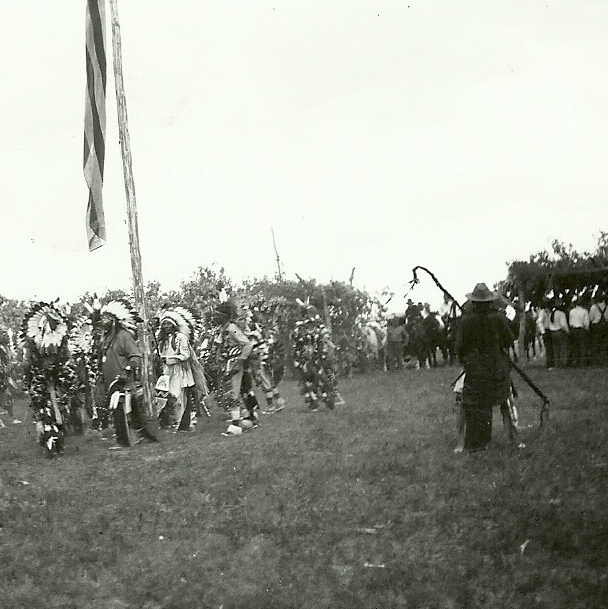 Most of us are able to trace our roots back to the Old West, since many of our ancestors were homesteaders. The Old West was a dangerous place to live. There were few, if any lawmen around, and outlaws found it to be a good hiding place. Probably a bigger concern for many of the settlers was the Indian population. There were a lot of hard feelings toward the white man, because of broken treaties and stolen lands. Still, this wasn’t really the fault of the settlers and homesteaders, but they were the ones who often suffered the consequences. For this reason, friendships between the Indians and the White Man were rare.
Most of us are able to trace our roots back to the Old West, since many of our ancestors were homesteaders. The Old West was a dangerous place to live. There were few, if any lawmen around, and outlaws found it to be a good hiding place. Probably a bigger concern for many of the settlers was the Indian population. There were a lot of hard feelings toward the white man, because of broken treaties and stolen lands. Still, this wasn’t really the fault of the settlers and homesteaders, but they were the ones who often suffered the consequences. For this reason, friendships between the Indians and the White Man were rare.
My grandfather’s family was privileged to have one of those rare relationships. They were accepted and even loved by the Indians in the area. They were invited to the Pow Wows and other celebrations. The had meals and probably hunts with the Indians, and got to know them well. They knew men like Chief Thin Elk and Sitting Bull, two Lakota Sioux Indians and their tribes. They spent time with them, and learned their customs…spoke their language. Not many White Men had the opportunity to do that.
Of course, when we think back on the Old West, the first thing that comes to mind are the old shows, like Bonanza, Gunsmoke, and Little House on the Prairie. 
 We seldom think of the real people who lived those times…especially our own ancestors. I had been told that my great grandfather knew some Indians, but it just didn’t register until I saw pictures of him with the Indians…being friends with the Indians…having Pow Wows with the Indians. My great grandfather was one of those rare people who really did know Indians from the Old West. It was such an eye opening moment for me.
We seldom think of the real people who lived those times…especially our own ancestors. I had been told that my great grandfather knew some Indians, but it just didn’t register until I saw pictures of him with the Indians…being friends with the Indians…having Pow Wows with the Indians. My great grandfather was one of those rare people who really did know Indians from the Old West. It was such an eye opening moment for me.
 A few years ago I was watching a show that used to be on television called “Rescue 911” about a boy that wandered away from his mom, who was on the phone with his dad, and ended up in a terrifying situation. They were in a mall or airport or something…that part I don’t recall. What has stayed in my head was what happened afterward. The boy was excited about their upcoming adventure, and ended up stepping onto the escalator without his mom. She was only distracted for a moment, but that was all it took. Not knowing the danger, he simply sat down. The boy was wearing a sweat suit…the next level of danger. When he got to the bottom, his clothing got caught in the teeth of the escalator, and he was trapped. A young man saw it and tried to tear his clothing so he could breathe, but with a sweatsuit, it was impossible. Just before his life would have been ripped from him, the young man rescued him, by hitting the kill switch…thankfully. I’m sure that boy has never forgotten it. It is embedded in his memory for life.
A few years ago I was watching a show that used to be on television called “Rescue 911” about a boy that wandered away from his mom, who was on the phone with his dad, and ended up in a terrifying situation. They were in a mall or airport or something…that part I don’t recall. What has stayed in my head was what happened afterward. The boy was excited about their upcoming adventure, and ended up stepping onto the escalator without his mom. She was only distracted for a moment, but that was all it took. Not knowing the danger, he simply sat down. The boy was wearing a sweat suit…the next level of danger. When he got to the bottom, his clothing got caught in the teeth of the escalator, and he was trapped. A young man saw it and tried to tear his clothing so he could breathe, but with a sweatsuit, it was impossible. Just before his life would have been ripped from him, the young man rescued him, by hitting the kill switch…thankfully. I’m sure that boy has never forgotten it. It is embedded in his memory for life.
I know, because when I was about 4, my mom took me and my sisters to tour the new bank in town. We had gone upstairs via the escalator. The bank was beautiful, and we all had a great time. mom decided that it was time to go. We went to the escalator, and she helped me on. My sister stepped to the side to look at something, and seconds later, my mom and my sisters got on the escalator, about 4 or 5 steps behind me, with people in between us. There was an older woman about 2 steps in front of me, and when she reached the bottom, she panicked. She began to back step. It wasn’t her fault really. She was scared. But, I was just a little girl.
When my feet ran into the old woman’s feet, it pushed her off of the escalator, but I fell down. Back then it was common for little girls to wear frilly dresses with a full skirt, especially when going somewhere special. That dress was quickly pulled into the teeth of the escalator. My screams could be heard all over the bank. The manager came running. He assured my mom that the bank would pay for all medical bills and buy mea new dress. He begged us not to sue, which my mom had no intention of doing, but he didn’t know that. True to his word, the bank took care of everything…that they physically could.
Over 50 years later, I still cannot step on an escalator without feeling a lurch in my gut. It is no one’s fault, it is just part of who I am. Traumatic events…even in the very young, just don’t go away easily. I felt nauseated while I was watching the episode of “Rescue 911” that night. I was still able to vividly remember those events. When the program was over, I was shaking. It was more real to me than anyone could ever know.
I know it was no one’s fault, and there was nothing my mom could have done, but I want to tell everyone to be careful on escalators, especially with children, as it could easily cost them their lives, if they are caught in one of these. I have seen people allow their kids to take a ride on the escalator…alone. I want to yell at the parents…ask them, “Don’t you know what could happen?” But all I can do is stand by and pray the God will protect those unsuspecting parents and kids. Please…don’t let your kids ride an escalator alone!!

